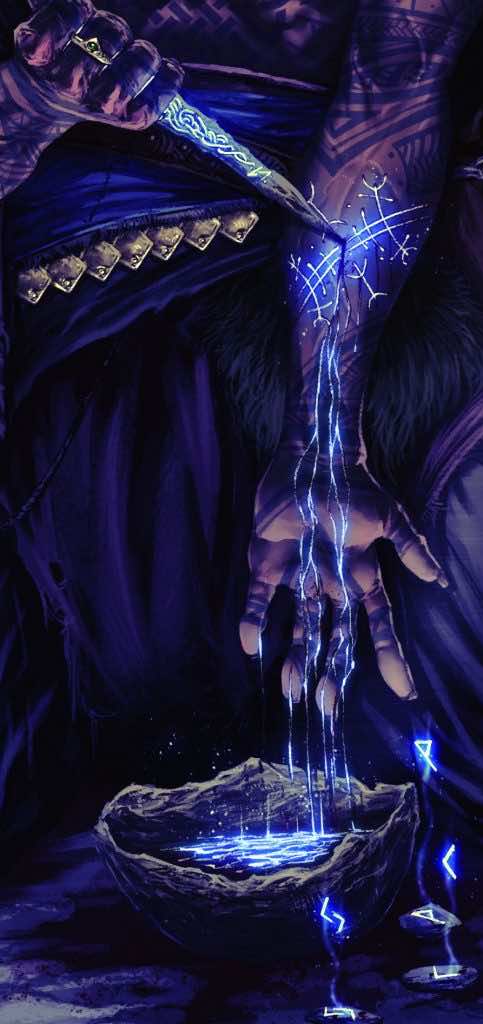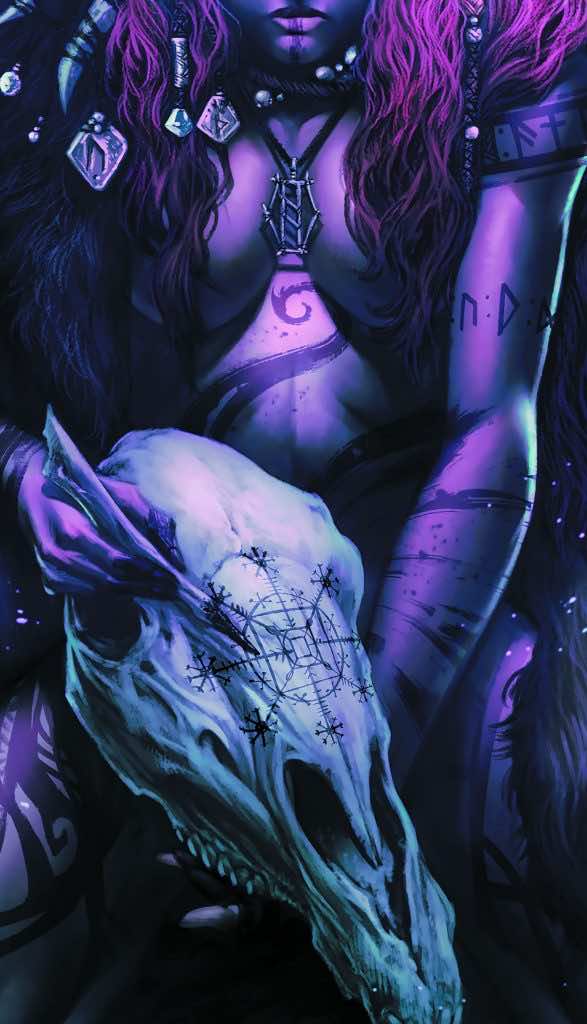A few weeks ago, Mana Project Studio announced Norse Grimoire, a manual for D&D5e completely dedicated to Norse ritual magic. Until now very little was known about it, but we managed to snatch an exclusive interview with Marco, one of the authors, in order to reveal some juicy anticipation. Many still obscure aspects of this highly anticipated manual will be revealed below, but it is not over here. At the bottom of the article you will also find a surprise…
In the drafting have you also referred to the original texts or only to the (very valid) analysis of Mila Fois?
The challenge is to provide as many sources as possible, keeping two very important factors in mind. The first is that it is an oral tradition that has rarely left direct documentation behind it; it has been reported more often by other peoples and widely fictionalized by them. The second factor is that a level of fantasy interpretation of Norse culture is added to Mila’s historical documentation. Not dissimilar to what was done in Journey to Ragnarok.
Will it be proposed through the Kickstarter formula?
The initial idea was a Kickstarter, although at the moment we are also evaluating the opportunity to publish it with our own forces, an idea that has difficulties but that would perhaps allow an early exit of the book.
Norse Grimoire has been developed for D&D5e. How much is related to the system? How easy is it to take a cue from the content to properly export it to other games?
There is so much history of Norse magic and so much lore inside it that it will certainly be possible to export it to other games. We are in any case working very hard on bringing all the runes and symbols of power into play while respecting the intent of the DnD gameplay.
If I understand correctly, it will fully replace the magic of the Player’s Handbook, right? So does this mean that, using Norse Grimoire, the new spells will totally replace the original ones? And in this case how will the player have to adjust the class features that depend on the spells?
In reality, the use of sacred tattoos, the technique of reading the runes or the art of engraving the equipment will not affect the original magic of the system. These are mainly magical traditions that increase the player’s opportunities to customize their character. This manual has the intent, together with Journey to Ragnarok, to complete a fantasy setting with a Nordic taste that respects that type of tradition but does not want to replace the basics of the game, such as classes and features.
Will the very personal material components you spoke of be necessary for all spells or only for a few? Will they be so bulky and/or rare that they have to be handled with care when traveling? Can they be used multiple times without consuming them or will they be single use?
There is a very interesting point about the components. To use the power of certain symbols/spells, such as the Icelandic Galdrastafir, there is often a need for specific components or sometimes a list of materials to combine together. The ritual must be officiated by the character at the best of his ability; depending on the rarity of certain elements or the duration of the ritual, he will obtain a more or less powerful effect. Often, at the end of these rituals, one ends up creating amulets or real magic objects. It is a crafting work that distinguishes Nordic magic very much. Create an object to fix the magical intent in reality.
How does this manual correlate with Journey to Ragnarok and how compatible are they? Will it be possible to use Norse Grimoire also with the new JtR mechanics, such as the Master of Runes class and the daily Futhark die?
Norse Grimoire was conceived and developed to be fully compatible with Journey to Ragnarok, its rules and adventures.
The seid, given the scarcity of historical material that has come down to us, will be completely absent among the proposed mechanics?
We suffered a lot for the seid. I admit it. It’s one of the most fascinating things of the Nordic magical tradition. But attaching this witchcraft practice of shamanic origin to this manual would have led to creating a whole world of spirits and presences to relate to. For the way this book was created, introducing what we suppose shamans could do would have been very difficult; the reason is that we couldn’t explain how these shamans did it. Difficult and perhaps a bit far from our initial purpose, which wants to bring something historically accurate in a game world that we make real.
In conclusion, will the novelties brought by Norse Grimoire also be applied to all pre-existing monsters in D&D5e with magical abilities (whether they are innate or a normal spell casting)? Will the same happen to all magical objects, their abilities and their method of creation?
I believe that this is one of the aspects that only the narrator can evaluate. Although it is very difficult that monsters and creatures far from the gods or from the Norse tradition can “activate” powers that draw their foundation precisely in the relationship between man and the divine.
Moreover we’re happy to share with you some exclusive images. These wonderful illustrations are a juicy leak of what we’ll find in this manual:







Trackbacks/Pingbacks